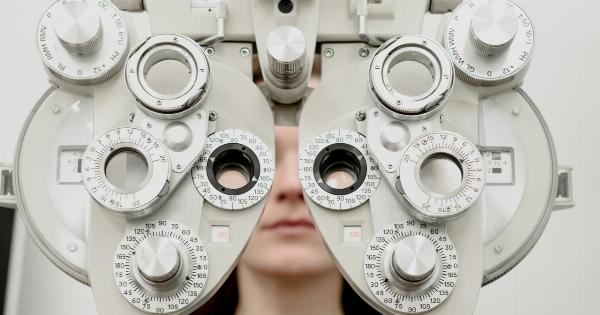Gene editing is a cutting-edge technology that has revolutionized the field of medical research. It involves precise modifications to an individual’s DNA in order to correct genetic defects or enhance certain traits.
One area where gene editing shows great promise is in treating vision loss. In this article, we will explore how gene editing can potentially restore vision in individuals who suffer from visual impairments.
Understanding Vision Loss
Vision loss is a common health concern that affects millions of people around the world. It can be caused by various factors, including genetic mutations, age-related macular degeneration, diabetic retinopathy, and hereditary eye diseases.
For individuals suffering from vision loss, everyday activities like reading, driving, and recognizing faces can become incredibly challenging.
The Potential of Gene Editing
Gene editing techniques, such as CRISPR-Cas9, offer a ray of hope for individuals with vision loss. This technology enables scientists to precisely edit the DNA of living organisms, including humans.
By correcting specific genetic mutations responsible for vision impairments, gene editing holds the potential to restore sight and improve the quality of life for those affected.
Gene Editing Targets
A significant number of vision disorders are caused by mutations in a single gene. By identifying and targeting these genes, scientists can potentially reverse the effects of these mutations and restore vision.
One such example is Leber congenital amaurosis (LCA), a rare inherited retinal disease that causes severe vision loss in early childhood. Gene editing could potentially correct the genetic mutation responsible for LCA, allowing affected individuals to regain their sight.
Challenges and Risks
While gene editing for vision loss holds immense promise, there are several challenges and risks associated with this approach. The first challenge lies in delivering the gene editing tools to the specific cells within the eye.
Researchers are currently exploring various delivery methods, including viral vectors and nanoparticles, to ensure efficient and precise targeting.
Another challenge is ensuring the safety and efficacy of gene editing techniques. Scientists must conduct extensive research to guarantee that modifying the DNA does not cause any unintended consequences or off-target effects.
Ethical considerations and regulatory approvals also play a crucial role in ensuring that gene editing treatments for vision loss are developed responsibly.
Gene Therapies for Vision Loss
In recent years, gene therapies for certain types of vision loss have shown promising results. One such therapy is Luxturna, the first FDA-approved gene therapy for an inherited retinal disease.
Luxturna targets a specific genetic mutation in individuals with biallelic RPE65 mutation-associated retinal dystrophy.
Individuals receiving Luxturna injections have shown improvements in their ability to navigate obstacles, read letters on an eye chart, and perform other visual tasks.
While Luxturna is a groundbreaking treatment, it currently addresses only a specific mutation. Gene editing techniques have the potential to expand the reach of gene therapies by targeting a broader range of genetic mutations.
Advancements in Gene Editing Techniques
The field of gene editing is rapidly evolving, with new techniques and technologies constantly being developed.
While CRISPR-Cas9 is currently the most well-known and widely used gene editing tool, other approaches like CRISPR-Cas12a and base editing are also gaining traction.
These advancements offer greater precision, efficiency, and versatility in gene editing, making it easier to target specific genes and correct mutations.
As gene editing techniques continue to improve, the potential for treating vision loss becomes even more promising.
Gene Editing and Age-Related Macular Degeneration
Age-related macular degeneration (AMD) is a leading cause of vision loss in individuals over the age of 50. It affects the macula, which is responsible for central vision. While there is no cure for AMD, gene editing offers a potential solution.
Researchers have identified a gene called VEGF, which plays a significant role in AMD.
By using gene editing techniques to inhibit the overexpression of VEGF, it may be possible to slow down disease progression and preserve vision in individuals with AMD.
Gene Editing and Retinitis Pigmentosa
Retinitis pigmentosa (RP) is a group of inherited eye diseases that cause progressive vision loss. It primarily affects the retina, leading to the gradual loss of peripheral vision and, in some cases, complete blindness.
Gene editing could potentially address the genetic mutations responsible for RP.
Scientists have already made progress in identifying specific gene mutations associated with RP, such as the RHO gene.
By using gene editing techniques, researchers aim to correct these mutations and restore the normal function of the affected genes, potentially slowing down or halting the progression of RP.
Ethical Considerations and Future Outlook
While gene editing holds great promise for vision loss, it also raises important ethical considerations.
The ability to modify the human genome raises questions regarding potential misuse, unintended consequences, and unequal access to these treatments.
Despite the challenges and ethical concerns, gene editing for vision loss continues to move forward. Ongoing research and advancements in gene editing techniques offer hope for individuals suffering from visual impairments.
Conclusion
Gene editing has the potential to be a game-changer in the field of vision loss.
By targeting specific genetic mutations responsible for various eye disorders, gene editing techniques offer the possibility of restoring vision and improving the lives of millions of people. While challenges remain, ongoing research and advancements in gene editing technology bring hope for a future where vision loss may no longer be an irreversible condition.


























